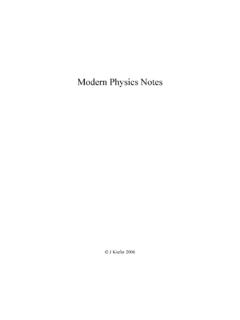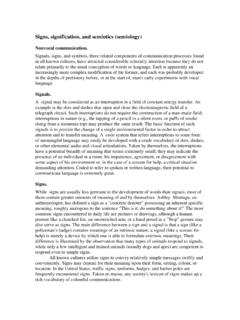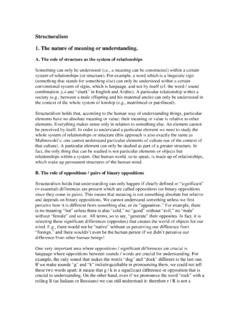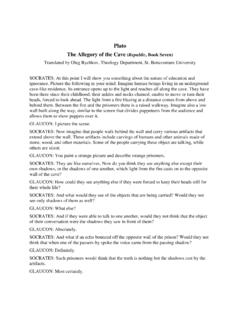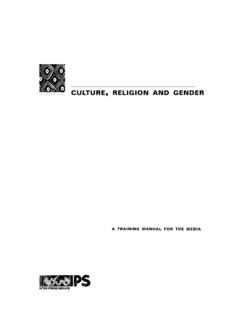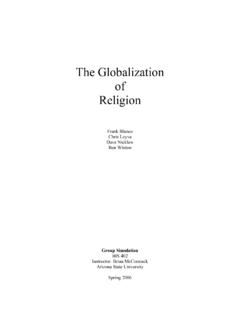Transcription of Religion and Art: Introduction - St. Bonaventure University
1 Religion and Art: Introduction Art and emotion Conceptual or verbal discourse is able to transmit information, not how you feel. Since each of us is a whole person, an I, and not just an intellect, it is important how we feel. Art affects you precisely as an I and makes you feel something, rather than transmitting some conceptual information. Art has intellectual components, of course, but they are always enhanced by emotional. This is the point of art: to affect directly our sense perception and emotions. This is also why art is often more powerful than concepts and words. Due to its nature art is also capable of training and controlling human emotions.
2 Art, emotion, and other areas of human life Art is something important, desirable, pleasurable, something people need and want. Since art has to do with personal emotions, one can use art to draw on these emotions for other reasons. Therefore the arts are used in all major areas of human activity to enhance them: the arts sell (as a commodity or promotional tool); they are used in connection with politics to promote agendas; they are used in connection with Religion to enhance religious experience. Art and Truth The question of the relationship between art and truth is of utmost importance for the subject art and Religion since Religion and theology also lays claim to truth.
3 The problem with art in relation to truth was detected already by Plato: , does poetic fiction have anything to do with truth or it is simply a lie? This problem has only been recently resolved. The explanation is that there are several types of truth. What Plato was primarily referring to is the truth of correspondence. From the point of view of correspondence to reality most of literature, poetry, and some other arts are lying and deceiving: this is why, according to Plato, they should be expelled from our society. However, another important type of truth is that of disclosure: the true is that which discloses and reveals something about something else.
4 From this perspectives many artworks are true (see Cicero). Even Plato already sensed that, , regarding music. Music and other elegant arts lead to the understanding of ART AND Religion , BY O. BYCHKOV 2 some truth about the world ( , its harmony and unity). One can easily test this by listening to some pieces by Bach, Mozart, or liturgical composers (Desprez, Palestrina). Truth as disclosure is one of the most important points of convergence between art and theology. Another important type of truth that can be applied to art is truth of coherence. , within a coherent and unified plot something can be true and appropriate, although it may not correspond to anything outside this plot.
5 Art as art (art and the aesthetic sense; art and beauty) Art and aesthetic perception, or our sense of beauty, also have something to do with cognitive functions and knowledge. For example, symmetry and proportion is important to many arts: just as in mathematics, physics or geometry. Also the sense of what is appropriate (taste, style) or the sense of balance is important to the arts: just like in ethics where we strive for a balanced behavior and what is appropriate. Another crucial area is the disinterested nature of our appreciation of art, which is called the aesthetic attitude.
6 By learning to view the arts in a disinterested manner ( , apart from any personal interest or gain), we also learn to transcend our personal interest in morals. Finally, art and beauty are important to enhance our sense of transcendence. Art and beauty are immediately pleasing but the reasons for this are unclear. This means that the rules and principles of art are beyond us or transcend us: possibly indicating the presence of a higher principle ( , the divine) in the universe. Art and Religion Why study the arts and Religion together? Historically most religious traditions from aboriginal cultures to world religions used the arts.
7 At the same time, historically most of what we now call art were religious objects or depicted religious themes. Historically, both communities and private individuals invested in religious art as if it were one of the most important enterprises. At the same time, there were many religious ART AND Religion , BY O. BYCHKOV 3 controversies and even wars around art (until the present!), which resulted in mass destruction of art objects and even in deaths of their supporters. Human perception of the world is synaesthetic, , not only language faculty is used but also vision, hearing, and other senses.
8 Faculties such as vision, hearing and language are heavily interdependent, so there is no reason to prioritize only one of them. There is also evidence that areas other than language ( , vision and hearing, or traditional artistic media) can express certain part of our experience, such as religious, better and reach people at a deeper level. How the arts contribute to Religion The arts have always been used to express the divine, , in Christian liturgical services. What is their role? Do they simply enhance certain texts, meanings, and feelings? Or are they essential to our perception of the divine?
9 Indeed, if reality has a divine origin then whatever is part of it must be germane or at least analogous to the divine. 1. Generally, the arts, due to their strong emotional impact and ability to act immediately and directly upon our perception, prior to conceptual thinking, can enhance any area of experience, including religious experience. 2. Specifically, both natural and artistic beauty is capable of evoking what is called the sense of transcendence, or the presence of some deeper (divine) principles in the world. Art and beauty are immediately pleasing but the reasons for this are unclear. This means that the rules and principles of art are beyond us or transcend us: possibly indicating the presence of a higher principle ( , the divine) in the universe.
10 The arts are used for these purposes by most religious traditions, but specifically in the Christian tradition by the Eastern Orthodox and Catholic traditions. ART AND Religion , BY O. BYCHKOV 4 Tensions between the arts and Religion Historically, both of the above points also caused concerns about the use of the arts by Religion . 1. The strong emotional impact of the arts causes a concern that the audience will simply be distracted by the beauty they perceive and focus on the arts themselves, not on the words of the scriptures, religious ideas or sentiments. For example, music, in addition to creating an elevating emotion and the feeling of the divine, can also be simply pleasurable and distract and lead astray from the word of the Scripture and liturgical texts.
